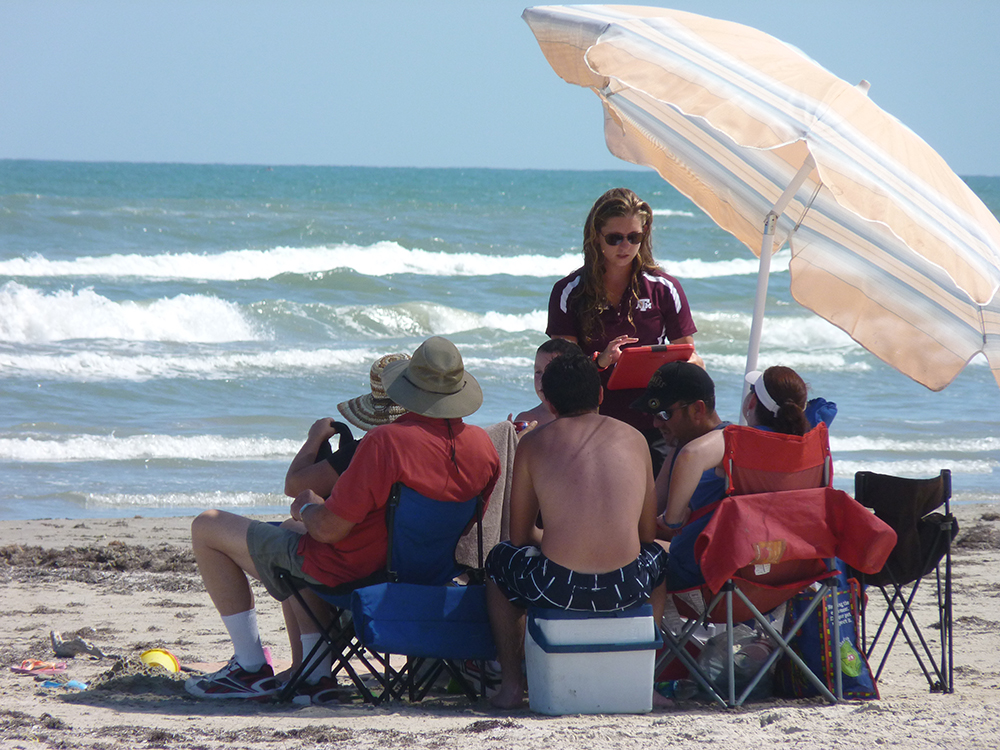Back to the beach: Developing better ways to warn about rip currents
As college students from around the country begin to arrive at Texas beaches for spring break, two researchers at Texas A&M University are working to make them — and all beach visitors — safer.
With funding from the Texas Sea Grant College Program at Texas A&M, Drs. Chris Houser and Christian Brannstrom, associate professors in the Department of Geography, and three geography students surveyed beachgoers on Galveston Island and in the Corpus Christi/Port Aransas area. They wanted to know two things: Could beach users identify a rip current, and what did they learn from the existing warning signs?
The ultimate goal of the project is to determine if and how the warning signs can be improved. Developed in 2004 through a partnership between NOAA, the United States Lifesaving Association and the National Sea Grant Program, the signs were designed primarily to increase awareness of rip currents and instruct people how to escape if they are caught in one.
Nationwide, more than 100 people a year are killed at surf beaches by rip currents. Rips don’t pull people under the water, they pull them away from shore. They are most dangerous for weak or non-swimmers, but the strongest ones can sweep even the best swimmers offshore.
#TAMUresearch


